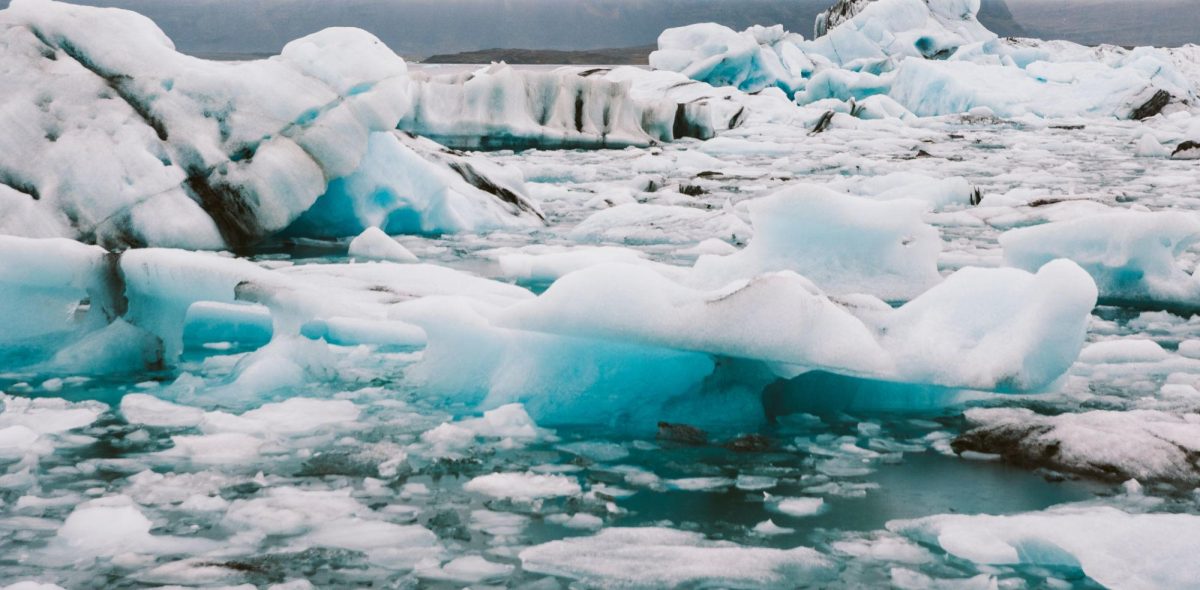It is estimated that melting ice in the Antarctic could sea levels to rise by up to 50 meters.
A new study charts 45,000,000 years of Antarctic temperature change.
Scientists have created the first charts of Antarctic ocean temperatures over the last 45 million years using molecular fossils and machine learning, providing vital insights into future sea level changes.
The researchers, led by experts from Victoria University of Wellington (NZ) and Birmingham (UK), believe their results indicate that we are near a “tipping point” where ocean warming driven by atmospheric CO2 could trigger catastrophic rises in sea levels due to melting ice sheets. Their findings were recently published in the journal Nature Geoscience.
In the study, the scientists examined molecular fossils from core samples taken during ocean drilling projects. The fossil remains are single lipid (water-insoluble) molecules created by archaea, which are single-celled organisms similar to bacteria. The archaea adjust the composition of their outer membrane lipids in response to changing sea temperatures. Scientists can infer the ancient sea temperature that would have surrounded a certain sample as it died by analyzing these changes.
While these molecular fossil techniques are well used by palaeoclimatologists, the team from Wellington (NZ) and Birmingham (UK) went a step further. They used machine learning to refine the technique, giving the first record to date of changing Antarctic sea temperatures throughout much of the Cenozoic period – covering the past 45 million years.
That means scientists are able to pinpoint much more accurately the historic temperatures which caused ice sheets to grow and shrink during that period. The future loss of ice sheets and the retreat of glaciers in the Antarctic is critically important as melting ice in the region could sea levels to rise by up to 50 m.
“The record we’ve produced offers a much more robust overview of fluctuating Antarctic temperatures and how these relate to changes in the amount of ice, and the topography of Antarctica, over this period and paves the way for improved estimates of future events,” explains the Birmingham lead author Dr. James Bendle.
The link between CO2, sea-surface temperatures, and the amount of ice in Antarctica is clear through the last 45 million years. But one surprising finding was that ocean cooling did not always correspond to increases in Antarctic ice. Specifically for a 1 million-year-long period of ocean cooling from 25 to 24 million years ago. “We show that this is likely related to tectonic subsidence and the influx of relatively warm ocean water in the Ross Sea region,” says Dr. Bendle.
“We can see that ice in Antarctica is currently changing – not least with the loss of some ice shelves and cracks appearing recently in the Thwaites Glacier, one of the largest glaciers in the region. This new study of Earth’s past is one of the clearest indications yet that humans continue to produce CO2 levels for which we can expect major ice loss at the Antarctic margins and global sea-level rise over the coming decades and centuries.”
The team plans to continue to apply biomarker and machine learning approaches to reconstruct the climatic evolution of Antarctica and implications for future warming and sea-level rise.
Reference: “Climatic and tectonic drivers of late Oligocene Antarctic ice volume” by B. Duncan, R. McKay, R. Levy, T. Naish, J. G. Prebble, F. Sangiorgi, S. Krishnan, F. Hoem, C. Clowes, T. Dunkley Jones, E. Gasson, C. Kraus, D. K. Kulhanek, S. R. Meyers, H. Moossen, C. Warren, V. Willmott, G. T. Ventura and J. Bendle, 15 September 2022, Nature Geoscience.
DOI: 10.1038/s41561-022-01025-x
The study was funded and facilitated by the International Ocean Drilling Programme, Antarctica New Zealand, The Royal Society Te Apārangi Marsden Fund (NZ), The Natural Environment Research Council (UK), the Scientific Committee of Antarctic Research, and the US National Science Foundation. Plus support in kind from the University of Birmingham, Yale University, and the Royal Netherlands Institute for Sea Research (NIOZ).
Share your story or advertise with us: Whatsapp: +2347068606071 Email: info@newspotng.com









